The 1980s were a significant decade for the punk subculture, as it marked the continuation and evolution of the rebellious, do-it-yourself (DIY) fashion that had originated in the 1970s. Punk fashion in the 1980s was characterized by a mix of styles, influences, and a growing sense of individualism. This blog post explores the development of punk fashion in the 1980s, highlighting the key elements and influences that shaped this iconic subculture.
The Pioneering Years: Building on the 1970s
Punk fashion in the 1980s built upon the DIY ethos of the 1970s. The 1970s had seen the emergence of punk icons like the Sex Pistols and The Ramones, who set the tone for the movement.
The 1970s were a decade of cultural and social upheaval. It was a time when music, art, and fashion underwent radical transformations. One of the most iconic and rebellious movements to emerge during this era was punk. Punk fashion in the 1970s was a bold and unapologetic rejection of mainstream norms. It became a symbol of anti-establishment, counterculture, and individualism.
The impact of punk fashion in the 1970s extended beyond the decade itself. Punk style has been a source of inspiration for subsequent generations of fashion designers and subcultures. Its rebellious spirit, DIY attitude, and disregard for conformity continue to influence street style, alternative fashion, and even high fashion.
Punk fashion is a testament to the power of clothing as a form of self-expression. It challenged the status quo, questioned authority, and celebrated individuality. The 1970s punk movement may have been born out of a specific time and place, but its legacy lives on in the diversity and creative energy of fashion today.
The essential elements of punk fashion, including leather jackets, ripped clothing, and band t-shirts, continued to be popular in the 1980s.
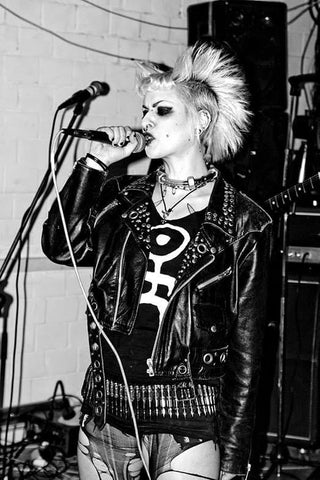
The Rise of Hardcore Punk
In the early 1980s, a new subgenre known as hardcore punk emerged. This subgenre was faster, more aggressive, and politically charged. Hardcore punks favored a more utilitarian style, often wearing plain sleeveless punk shirts, men's punk rock jeans, and sneakers. The clothing was meant to withstand the intensity of the mosh pit and the aggressive dancing associated with hardcore punk shows.
Key Characteristics of Hardcore Punk
Raw Aggression
Hardcore punk is characterized by its relentless speed and aggression. Short, fast songs often under two minutes in length were the norm. The ferocity in the music was reflected in the lyrics and the stage presence of the bands.
DIY Ethos
The "do it yourself" (DIY) attitude was a central tenet of hardcore punk. Bands, fans, and promoters were actively involved in creating and distributing music, organizing shows, and producing fanzines, all without relying on major labels.
Anti-Establishment Ideals
Hardcore punk was a voice of dissent and rebellion. Its lyrics often criticized societal norms, government, and authority figures. The music was an outlet for youth to vent their frustrations and angst.
Minimalistic Aesthetics
Hardcore punk eschewed the extravagant styles of mainstream rock. Bands sported a minimalist look, often dressing in street clothes and forgoing elaborate stage setups.
Diverse Sound
While hardcore punk was united by its intensity and DIY ethos, it was not a monolithic sound. Bands from different regions added their own flavors, leading to the development of sub-genres like D.C. hardcore, California hardcore, and more.
Cultural Impact
Underground Community
Hardcore punk fostered a tight-knit underground community. This subculture gave a voice to marginalized and disaffected youth, helping them connect and express themselves.
Political Activism
Many hardcore punk bands used their music to address social and political issues. Bands like Dead Kennedys and Minor Threat penned lyrics that confronted issues like war, racism, and inequality.
Influence on Later Genres
Hardcore punk had a significant influence on the development of later punk and alternative rock sub-genres, such as post-hardcore, emo, and even grunge.
DIY Spirit Lives On
The DIY ethos of hardcore punk continues to inspire independent musicians and artists. The lessons learned from this movement are invaluable to those looking to create art on their terms.
The rise of hardcore punk was a tumultuous period in the history of music. It was a time when youthful rebellion and a refusal to conform to societal norms converged to create a powerful and enduring subculture. The raw intensity, DIY ethos, and anti-establishment ideals of hardcore punk continue to resonate with those who value the transformative power of music and the importance of expressing one's true self.
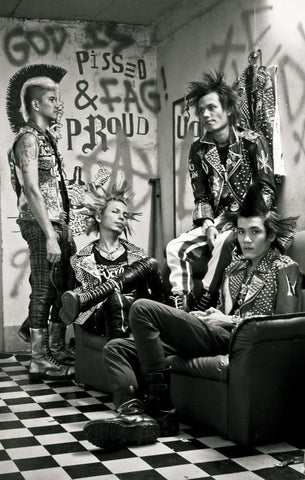
Post-punk and New Wave
As the decade progressed, punk fashion began to diversify. Post-punk and new-wave music had a significant impact on fashion. Bands like Siouxsie and the Banshees and Depeche Mode inspired a gothic and more romantic aesthetic. Black clothing, leather, and dark makeup became prevalent in this subculture. The new wave scene brought about the use of bright colors, skinny ties, and skinny jeans.
Key Characteristics of Post-Punk
Musical Experimentation: Post-punk was characterized by its musical diversity and willingness to experiment. Bands like Joy Division and Gang of Four incorporated elements of funk, electronic music, and avant-garde soundscapes into their music.
Lyrically Complex: Post-Punk lyrics often delved into darker and more complex themes, ranging from existentialism to social and political commentary. Joy Division's Ian Curtis, for example, was known for his haunting, introspective lyrics.
Minimalism: Many Post-Punk bands adopted a minimalist approach to their music, favoring stark, repetitive rhythms and sparse instrumentation.
Atmospheric and Moody: The music of post-punk often created a brooding and atmospheric mood, evoking a sense of melancholy and introspection.
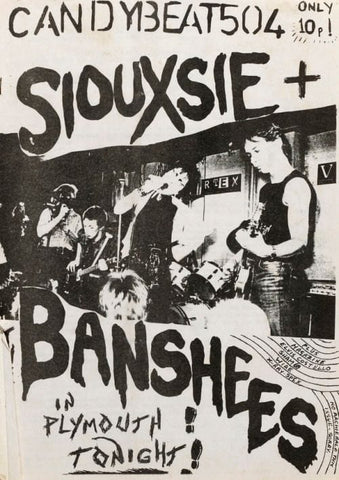
Key Characteristics of the New Wave
Pop Sensibilities: New Wave incorporated catchy melodies and pop sensibilities, making it more accessible to mainstream audiences. Bands like Blondie and The Cars found commercial success with their infectious tunes.
Synthesizers and Electronic Elements: Synthesizers and electronic instruments played a significant role in the sound of New Wave, contributing to its futuristic and danceable qualities.
Eclectic Fashion: The New Wave era is often remembered for its eclectic and sometimes eccentric fashion choices, featuring bold colors, asymmetrical hairstyles, and avant-garde outfits.
Influence on MTV: The rise of MTV in the early 1980s helped catapult New Wave into the mainstream. The visual nature of music videos became a crucial part of the genre's identity.
Enduring Impact
The legacy of Post-Punk and New Wave can be seen in various aspects of contemporary music and culture:
Alternative and Indie Music
Many alternative and indie rock bands of the 1980s and beyond drew inspiration from Post-Punk's experimental spirit. Bands like The Smiths, R.E.M., and Radiohead all have elements of Post-Punk in their music.
Electronic and Synth-Pop
The electronic and synth-pop movements of the 1980s and beyond owe a debt to New Wave. Artists like Depeche Mode and The Human League continued to explore the use of synthesizers and electronic elements in popular music.
Fashion and Style
The New Wave era's fashion and style choices continue to influence fashion trends and subcultures, from the retro revival of vintage '80s fashion to the goth and emo scenes.
Artistic and Cultural Influence
Post-Punk's introspective and intellectually stimulating lyrics and New Wave's embrace of visual aesthetics and multimedia art have left a lasting imprint on the broader artistic and cultural landscape.
Post-punk and New Wave were not just musical genres; they were cultural movements that challenged the norms of the music industry and reshaped the musical landscape. Their influence continues to reverberate through contemporary music, fashion, and artistic expression, proving that the spirit of innovation and rebellion that birthed these genres still resonates with new generations of artists and fans. Whether you're a fan of the music, the fashion, or the underlying countercultural ethos, Post-Punk and New Wave remain iconic and enduring touchstones in the history of popular culture.
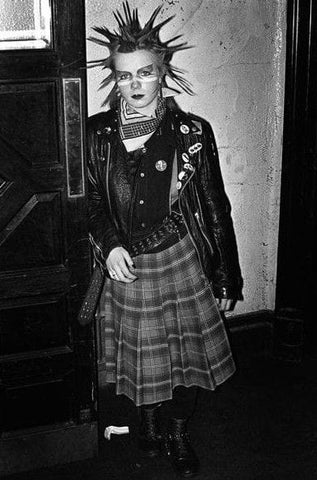
DIY Attitude
The DIY ethos remained a fundamental aspect of punk fashion in the 1980s. Punks continued to customize their clothing, creating unique looks that often carried political or social messages. Safety pins were still a popular accessory, serving as both a practical way to patch up clothing and as a fashion statement. Stenciled slogans, patches, and hand-painted designs on punk jackets for women and black punk jeans were common ways for punks to express their individuality.
Music as a Medium of Expression
The DIY ethos in punk music is most evident in the lyrics and themes. Punk songs often tackle social issues, political commentary, and personal experiences with brutal honesty. These lyrics aren't polished or pretentious but instead reflect the raw emotions of the artists. Punk musicians didn't need a team of songwriters; they wrote their own songs about what they cared about.
Creating a Unique Style
Punk fashion is another aspect where the DIY attitude shines. Rejecting the fashion industry's dictates, punks began to create their own styles. Safety pins, punk jackets for women, and DIY band t-shirts became the symbols of punk fashion. It wasn't about buying expensive designer clothes; it was about self-expression through unconventional means.
Art and Visuals
Punk's DIY ethos is also apparent in the art and visual aspects of the culture. Punk posters, album covers, and gig flyers were often created by bands or local artists. These visuals were gritty, unpolished, and embodied the rebellious spirit of the music. The art was a means of expressing dissent and anarchy.
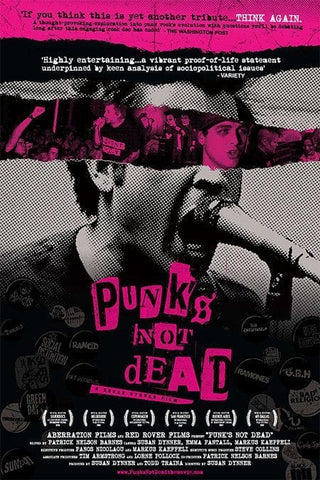
The Spirit of Inclusivity
One of the most remarkable aspects of the punk DIY attitude is its inclusivity. It welcomed people from all backgrounds, regardless of their musical or artistic abilities. The punk scene fostered a sense of belonging for those who felt like outsiders in mainstream society. It was an inclusive space for self-expression, and anyone could be part of it.
Vivid HairstylesHairstyles were a crucial component of punk fashion. The iconic mohawk, colored hair, and shaved heads were still prevalent. Brightly colored hair, particularly shades of neon, became popular in the 1980s, reflecting the vibrancy of the era. Hair was often styled in unconventional ways, with copious amounts of hair gel and hairspray.
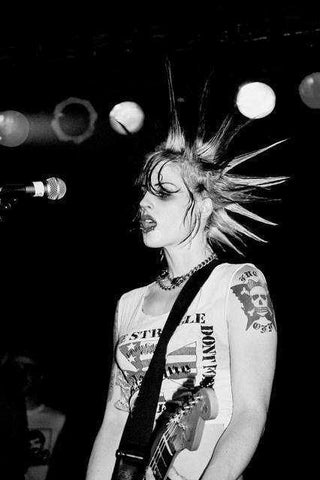
Influence of Subcultures
Punk fashion in the 1980s was influenced by various subcultures. The skinhead subculture, which had its roots in the 1960s but experienced a resurgence in the 1980s, contributed to the adoption of Doc Martens boots, shaved heads, and a working-class aesthetic. The crossover between punk and skateboarding culture also gave rise to skate-punk fashion, characterized by baggy clothing, Vans sneakers, and skateboard graphics.
Punk Fashion Icons
Several iconic figures played a pivotal role in shaping punk fashion in the 1980s. Artists like Sid Vicious, Johnny Rotten, and Debbie Harry continued to influence punk style. Additionally, punk fashionistas such as Vivienne Westwood and Malcolm McLaren's boutique, "Sex," remained essential hubs for punk fashion and design.
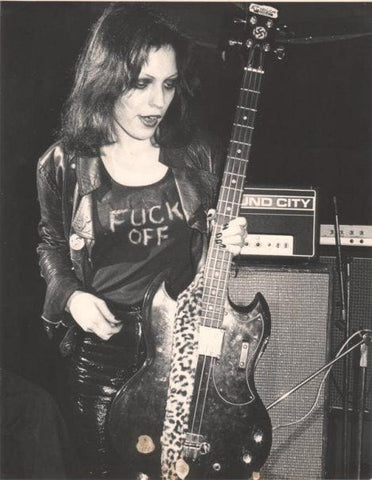
Punk fashion in the 1980s continued to be a bold and defiant statement against the mainstream. It evolved from its roots in the 1970s, incorporating elements from various subcultures and embracing individualism and DIY creativity. The decade saw the emergence of new subgenres and diversification of punk fashion, ultimately solidifying its place in the annals of rebellious style. Punk fashion in the 1980s was a testament to the enduring spirit of a subculture that refused to conform, and its influence can still be seen in contemporary fashion and culture.

 T10695
T10695 WK-462NCF
WK-462NCF
 JA97582
JA97582
